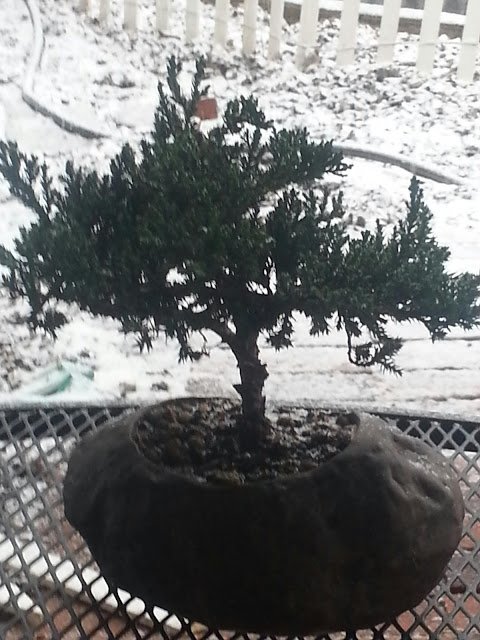Winterize Your Home: Simple Guide for a Warm, Cozy Home
It’s time to Winterize your home. Check out these super simple tips to help you stay warm and cozy all winter long! You’ll also be saving tons of money this Spring!
Protect Your Home in the Winter
 Winter is coming — has that joke gone cold? Well, soon enough you will feel the chill if you don’t take the time to winterize your home. Winterizing is a process that protects your home from winter-related damage and ensures greater energy efficiency through the cold season. If you haven’t already, you should start spending some of your free time winterizing your home in the following ways:
Winter is coming — has that joke gone cold? Well, soon enough you will feel the chill if you don’t take the time to winterize your home. Winterizing is a process that protects your home from winter-related damage and ensures greater energy efficiency through the cold season. If you haven’t already, you should start spending some of your free time winterizing your home in the following ways:
Prevent Frozen Pipes
Any above-ground pipe in an unheated space is at risk of freezing, and a frozen pipe could easily cost you thousands of dollars in water damage. Fortunately, winterizing pipes is inexpensive, but it could take you some time to complete.
First, you should scour your home for cracks and crevices where cold can seep in, sealing any openings you find in walls, crawlspaces, attics and basements. You should also check the insulation in your walls and roof to ensure that your home is efficiently maintaining a warm interior temperature. Then, you can purchase and install pipe insulation for pipes in attics and basements for as little as $0.50 per linear foot. In a pinch, you can also use pool noodles, though it would be best if you wrapped the whole thing in aluminum foil then taped it completely to keep water from getting in. Finally, it might be wise to leave neglected faucets on a slow drip throughout the cold season, so water will continuously move through pipes and resist freezing.
Weatherstrip Doors and Windows
Weatherstripping is a material that goes around movable components in your walls, like doors and windows, that are known weak points in your home’s exterior envelope. There are several different types of weatherstripping; here are the most common options:
- Tension seal: Vinyl or bronze in a V-shape used inside tracks of double-hung windows or sliding windows and doors. Durable, but moderately expensive.
- Felt: Stapled, tacked or glued in place around any door or window, maybe reinforced with metal strip. Perhaps the cheapest option, but quite weak and susceptible to rot.
- Reinforced foam: Foam attached to wood or metal strips run along door or window stops. Quite affordable and effective, but potentially difficult to install.
- Tape: Foam rolled up with adhesive and applied around inoperable doors and windows. Well-priced and easy to install, but low durability.
- Door sweep: Plastic, felt or sponge brush attached to the bottom of an inside-swinging door. Expensive and visible but quite durable.
Clean Vents
You will be using your heater all winter long, meaning any dust or gunk that has built up in and around your vents could soon cause problems, like allergies (we’ve got tips and tricks for allergens here!) or high energy bills. You should start by moving the furniture in your rooms to ensure that vents aren’t blocked and air can move freely. Next, you can clean the dust cover by giving it a once-over with a dust rag or by spritzing it with vinegar and water and wiping it with a soft cloth. If you haven’t cleaned your vents in a while (or ever), you might want to remove the dust covers and use the hose attachment on your vacuum to suck up any dust and debris just inside. Then, when your furnace kicks in, you won’t be breathing in a year’s worth of dust and dander.
Clean Fireplace and Chimney
There’s a reason that ‘chimney sweep’ was such a common profession a century ago: Fireplaces and chimneys need care when they are in use. The ash and soot produced from burning wood can clog up the relatively small channel that is supposed to carry smoke outside, resulting in a dangerous situation for your home. Plus, when chimneys aren’t in use, animals often find the chimney to be a safe place to make a home. It might be worthwhile to hire a chimney sweep to tackle this dirty and complex job, but you can attempt it yourself if you have the right tools.

Then again, if you don’t have a fireplace or chimney to worry about, you might need to start thinking about other ways to warm your interior spaces. Cranking up your furnace isn’t always energy-efficient; if you need extra heat for a small space, you might invest in an electric heater, which can keep your immediate area warm without wasting resources on uninhabited corners of the room.
Switch Ceiling Fans
Many people don’t realize that ceiling fans have seasonal settings: one for summer and one for winter. The summer setting allows the fan to blow cool air into the room, reducing the load on your A/C. However, just above the blades, you should find a switch that reverses the motion of the blades, allowing them to pull air up and circulate it around the rest of the room. Run at a low speed, this motion helps distribute the warm air, keeping the entire space cozy.
You don’t need to suffer through another winter with frozen pipes and a feeble furnace. By preparing now for the season ahead, you can enjoy a thoroughly warm and comfortable home.
If you have any tips or tricks you care to share, please leave them in the comments below!




